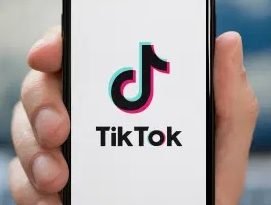TikTok Algorithm 2022
TikTok Algorithm 2022 How The Algorithm Works
It’s a scary world we live in when it comes to Social Media and the way the apps AI are almost programming ourselves into what we should watch and what we shouldn’t watch, but more on the latter that it is showing us content that we’ve grown addicted to watching.
TikTok relies heavily on how much time you spend watching each video to steer you toward more videos that will keep you scrolling, and that process can sometimes lead young viewers down dangerous rabbit holes, in particular toward content that promotes suicide or self-harm — problems that TikTok says it’s working to stop by aggressively deleting content that violates its terms of service.
If you’re among the billion people (literally!) who spend time on TikTok every month, you’re familiar with the app as 2022’s central vehicle for youth culture and online culture generally. It displays an endless stream of videos and, unlike the social media apps it is increasingly displacing, serves more as entertainment than as a connection to friends.
If you’re interested in reading how TikTok aims to target its users, Google TikTok Algo 101, referring to a highly classified leaked document that you will not find anywhere on the internet to download.
- The company’s “ultimate goal” is growing daily active users by increasing user retention rates and total time spent each time TikTok is opened.
- Each video is scored by the number of likes, comments and playtime. There’s even a handy formula for success, according to the document: Plike X Vlike + Pcomment X Vcomment + Eplaytime X Vplaytime + Pplay X Vplay.
But none of this is new. Retention, use time, number of likes and comments: These are the types of numbers every website or app analyzes to make informed business decisions. It’s the premise of Web 2.0.
- While this is standard social media practice, some would argue that what made TikTok unique is how successfully it combs through oceans of data and designs an algorithm that performs better than its competitors. We all know apps care about retention and time spent, but how should the stats be prioritized? Are 100 likes better than 10 comments?
In fact, another closely related app uses the same secret sauce. In January, a document titled “Guide to a Certain Video app’s Recommendation (Algorithm)” was released on several Chinese platforms. While it intentionally obscured which app it’s referencing, there are plenty of hints that it’s about Douyin, TikTok’s Chinese version.
- For one, the Chinese document describes how it makes recommendations in the exact same formula and language (yes, word for word) as the document leaked to the Times. They also used the same challenge to the algorithm as a case study.
- And in a Q&A entry about competitors, the document mentioned three other major Chinese apps — Toutiao, Kuaishou and Weibo — that rely on recommendation algorithms, but not Douyin, the app that does it the best.
- The two apps appear similar but have some different features, which has always led people to suspect that they run the same under the hood. But nobody outside ByteDance has been able to prove it.
ByteDance insists that it has completely separated the operations behind TikTok and Douyin, at the request of the U.S. That way, users and governments outside China don’t have to worry that the Chinese government is looking at their data. But according to the similarities in these documents, ByteDance might not be telling the whole truth. At least not yet.
- In 2020, former president Trump waged a war against TikTok, accusing it of transferring American users’ data to China and threatening national security. But he never succeeded in forcing ByteDance to sell TikTok to an American company.
- What ByteDance did do, in that spirit, was announce that TikTok would become a standalone company, with headquarters in Singapore and its own CEO, Shou Zi Chew.
- But can ByteDance accomplish a clean separation between the two apps, TikTok and Douyin, when they had been designed and maintained by the same group of people for years? And when they seemingly share algorithms? There have been several reports, like this one by CNBC in June, that say TikTok is still influenced by employees on the Chinese side. The latest Times column is another example.
In November 2021, ByteDance settled a class-action suit that said the company illegally gathered data from its users. ByteDance not enforcing the separation as the pressure from Trump has waned is a pretty strong reason for the U.S. government to come up with its own data regulation tools. Especially useful would be legislation that regulates how data is sold and transferred, sometimes outside U.S. borders, as people are worried about their data falling into the Chinese government’s hands.
China has already done this. It has enforced or proposed several legislations this year that heavily restrict the outbound flow of personal data, especially when they pertain to national security. It’s unclear whether Beijing has ulterior motives other than protecting users and national security. Totally possible: It has already helped Beijing hold DiDi back from listing in the U.S. But by acting quicker than the U.S., China is selling an example of data regulation, as Protocol’s Shen Lu wrote in August. Many Asian governments are writing their own data protection laws now, and they may end up copying from China’s playbook if no other country steps up and figures out a way to do this effectively.
Download TikTok for your device
